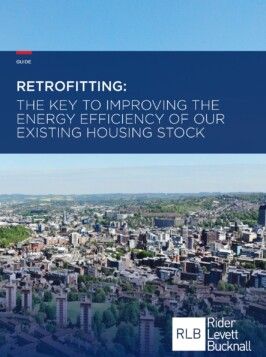The race to achieve net zero remains a number one priority for housing providers, and a more complex challenge than ensuring our new homes are net zero, is decarbonising our existing housing stock – an area we are supporting a number of clients with, by providing solutions.
The announcement from the Department for Energy Security and Net Zero (DESN) regarding the second wave of the Social Housing Decarbonisation Fund (SHDF) is a welcome development.
The fund’s aim is to upgrade a significant amount of the social housing stock currently below Energy Performance Certificate (EPC) band C up to that standard. It will support the installation of energy performance measures in social homes in England. This wave will allocate up to £80 million of grant funding from April 2024, building on the allocations made under the previous Wave 2.1.
The SHDF has been widely recognised for its success in helping housing associations on their journeys to reduce carbon emissions. So much so that several trade bodies have called on the government to release all the funds now to get some real traction.
The competition launch for the next wave of funding, along with the release of final guidance, clarification questions, and application forms, was issued on 20 November. Completed applications need to be submitted by 11.59 pm on 19 January 2024.
As a reminder the fund is open to bids from:
- local authorities
- combined authorities
- registered providers of social housing (including housing associations and arms-length management organisations (ALMOs) that are registered providers)
- registered charities that own social housing.
All eligible organisations could apply directly to Wave 2.2 either as single bidders or as the lead of a consortium. One of the differences for this second wave is that it has a shorter delivery window than wave 1. So, the guidance indicates that in this case a bid with fewer than 100 homes can be submitted with strong justification, although it is expected that in such cases bids should be as close to 100 homes as is possible.
One of the critical issues to keep in mind is that all SHDF projects must be PAS2035 compliant.
To enable this to happen means adopting a fabric first approach. At RLB we have highly experienced colleagues carrying out PAS2035 roles who can provide support and guidance to ensure this essential ‘whole house’ approach, from retrofit assessors and retrofit designers to retrofit coordinators and retrofit evaluators.
Our dedicated retrofit team can assist with all PAS2035 retrofit compliance. For further information please contact Andrew Blackley, Head of Retrofit or for further information download our guide.
FURTHER INFORMATION:



